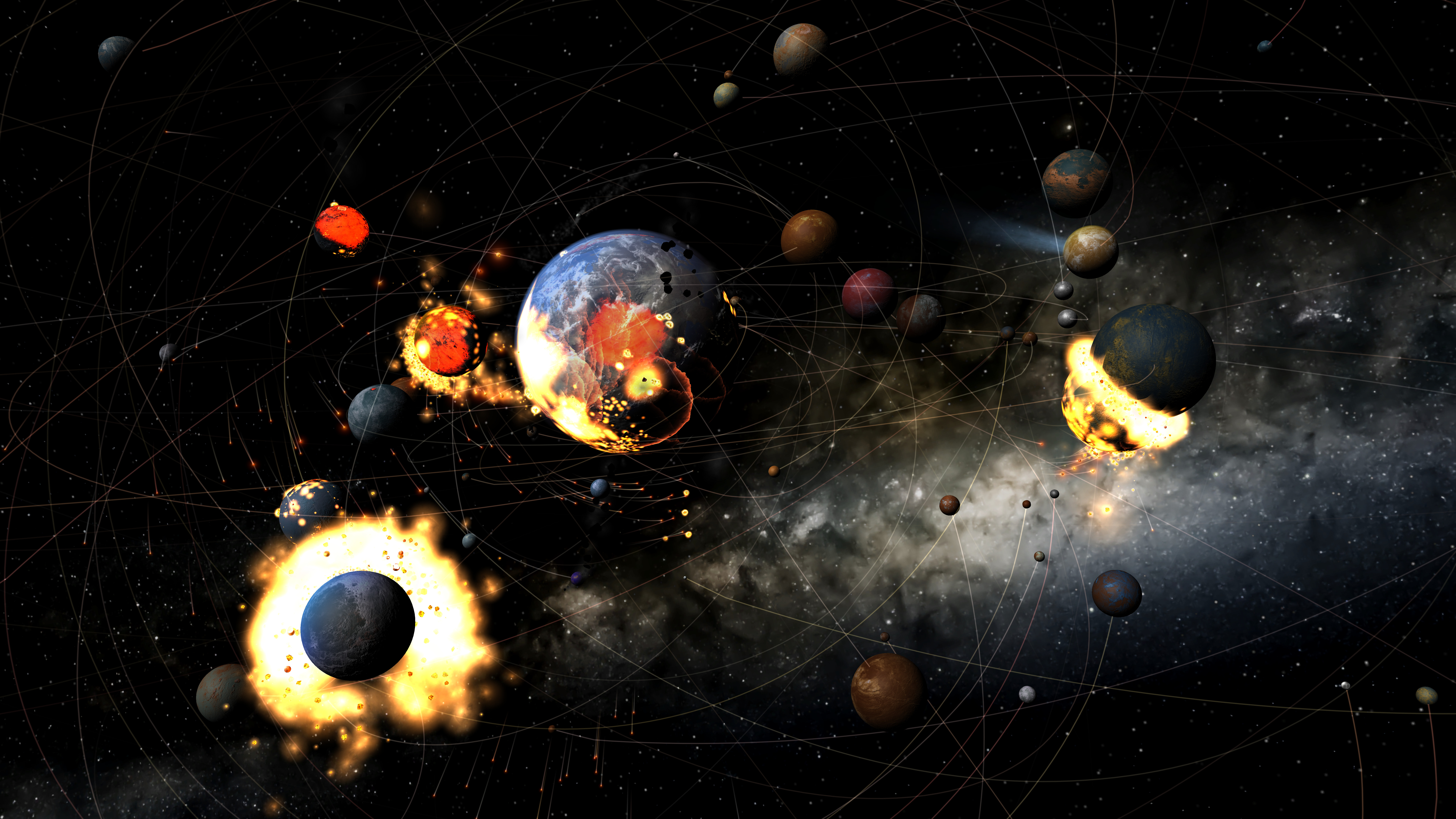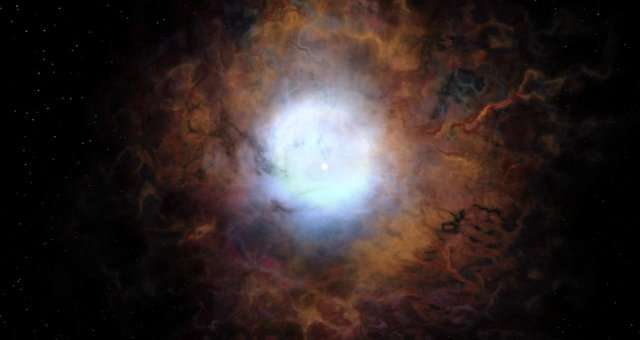

(08:56) Flame - A super-earth with a thin atmosphere. Dusc is near the minimum possible mass that an object is capable of sustaining the fusion of hydrogen into helium inside its core.

(08:44) Dusc - A small main sequence (red dwarf) star with either an L-type or M-type classification. There are also scattered asteroids that orbit among the planets, just like in our solar system. (08:20) Kuiper Belt and Scattered Disk - A region with lots of small solar system bodies and dwarf planets located beyond the orbit of Trajan. (07:44) Trajan - A small orange colored gas giant with several moons. (07:17) Marcus - A Neptune-like planet with several moons. (06:40) Tiberius - A small gas giant planet (possibly gas dwarf) planet planet with several moons. Like Constantine, Augustus has many moons. It is also a super-jovian planet that is even more massive than Constantine. (06:00) Augustus - The largest planet in the entire solar system. (05:15) Constantine - A super-jovian gas giant planet with many moons. (04:36) Suomi - A Venus-sized planet that is otherwise nothing like Venus Suomi is a frozen wasteland with a thin atmosphere. Nekomimi also has one large moon named Nekojin. There is vegetation, oceans, and an advanced civilization on Nekomimi. Nekomimi is very similar to Terras in size and composition but has a slightly lower average temperature. (03:42) Nekomimi - The "cooler twin" of Terras.

Terras also has one large moon named Lunas. Terras is between the size of Mars and Venus, making it a sub-earth, and has oceans, vegetation, and even cities, indicating the presence of an advanced society. (02:45) Terras - One of two habitable planets in the Dawnn system. It's similar to Mars in size and has a thin atmosphere but it is very hot. (01:35) Scorch - A hot super-earth with a thin atmosphere. Its surface is just hot enough to melt some rock giving a slight red glow. (01:11) Fumarole - A hot Earth-sized rocky planet with a thin atmosphere. It's similar in size to Venus but lacks a thick atmosphere. (00:42) Netherine - A very hot rocky planet with lava on its surface. (00:18) Gehenna - A hot Jupiter with an orbital period of just under one Earth day. (00:08) Dawnn - A K-type (orange) main-sequence star at the center of the system. Thank you for watching and, if you like this video, don't forget to subscribe. Music: Maestro Tlakaelel - Jesse Gallagher (In order to play the sim click subscribe to download, launch Universe Sandbox 2, and go to the subscribed section under workshop simulations in Universe Sandbox 2.)

#UNIVERSE SANDBOX 2 HOW TO MAKE A HABITABLE PLANET DOWNLOAD#
If you have a steam account and Universe Sandbox 2 you can download this simulation here: (I made a couple of minor changes to a couple of the planets and one of the moons in the system after this video was made.) It contains 2 stars, a brown dwarf, 23 planets, and hundreds of moons, asteroids, dwarf planets, and other small solar system bodies which are listed with timestamps below. I'd be interested to hear the results.Rumble - This is an original solar system I made in Universe Sandbox 2. If I were you, I would download The Universe Sandbox off of Steam and play with the physics of a binary star system with planets in the habitability zone. The reason I ponder this is because binary stars are rotating at extreme rapidity, and likely centered on an extreme gravitational pull to create such a violent rotation. Say if an Earth-like planet on around the same tilt access was subjected to a variable speed up, the seasons may be greatly increased in frequency, and the days may be extremely short by comparison, possibly only a few hours. That being said, in a bit of imaginative sense, I wonder if planetary rotation and stellar orbit would be both greatly increased in speed due to gravity from two stars. I've placed a link below as a good place to start, but the fact that you've already named the orbital types tells me you should likely know more than you're going to find from others on this site. I'm seeing it answered numerous times in numerous ways, allowing for creative thought and engineering to really become a "pick-and-choose" of what you would like to use out of the available information to construct your own working system. I honestly think this question is more for the lines of google.


 0 kommentar(er)
0 kommentar(er)
